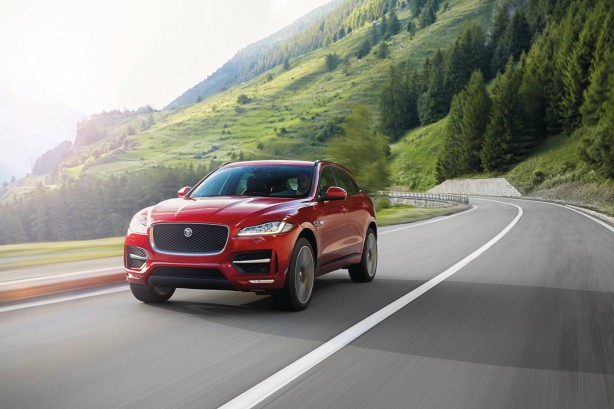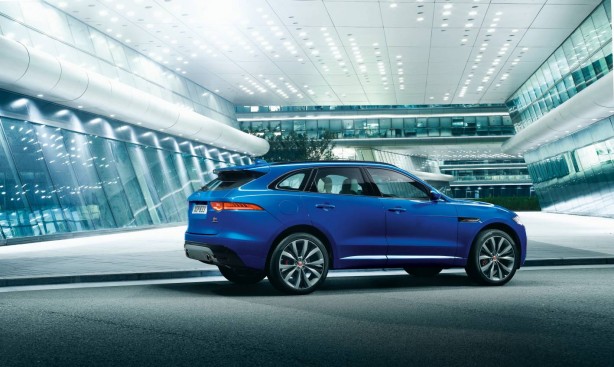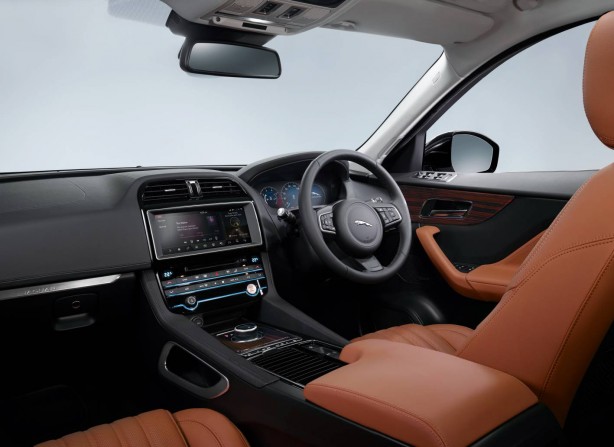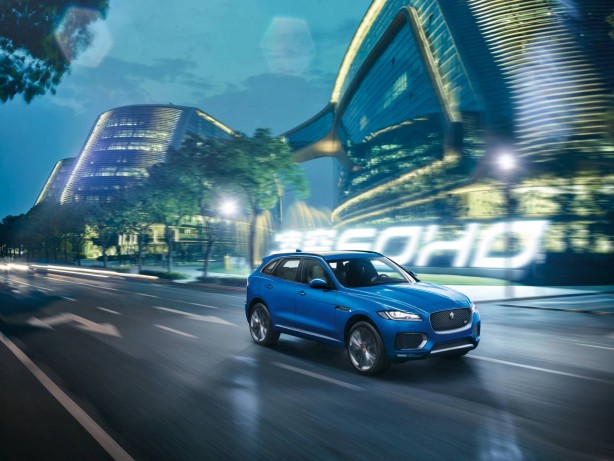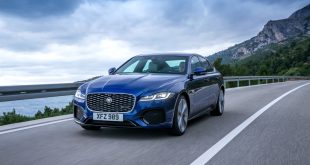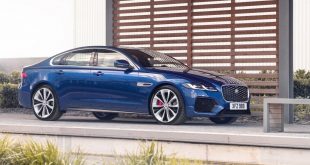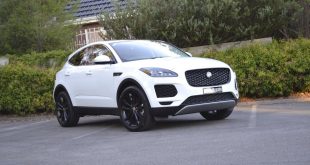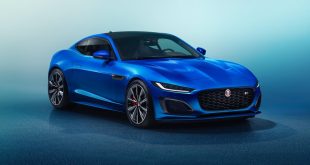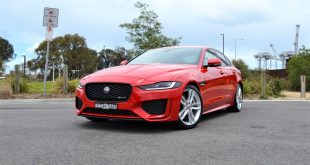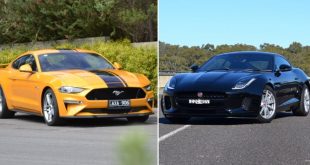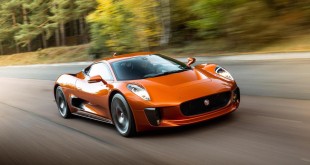The all-new Jaguar F-Pace has been officially unveiled at the Frankfurt Motor Show.
Developed using Jaguar’s Lightweight Aluminium Architecture, the brand’s first ever SUV combines purity of line, surface and proportion with F-Type-inspired features such as the powerful rear haunches, fender vents and distinctive tail light graphics.
Derived from the Jaguar C-X17 concept, the F-Pace features bold front grille, slender full-LED headlights and forged 22-inch wheels in upper spec models.
At 4,731mm long and with a 2,874mm wheelbase, The F-Pace has seating for five, and is said to offer class-leading knee room. Its cargo space of 650 litres is also said to dwarf those of its rivals.
The all-new F-Pace range will consist of Prestige, Portfolio, R-Sport, S and the limited run First Edition.
Powertrain options include a 132kW/430Nm 2.0-litre diesel automatic AWD, 220kW/700Nm 3.0-litre diesel automatic AWD, and 250kW/450Nm or 280kW/450Nm 3.0-litre petrol automatic AWD.
Using state-of-the-art computational fluid dynamics simulations and applying lessons learnt from the XE and all-new XF, the all-new F-Pace has a drag coefficient of only 0.34, helping to reduce fuel consumption and improve refinement.
The all-new F-PACE’s torque on-demand all-wheel drive (AWD) system is Jaguar’s most sophisticated yet, and has the highest torque capacity. The Intelligent Driveline Dynamics (IDD) preserves rear-wheel drive agility and handling character but can seamlessly transfer torque to the front wheels to exploit the performance benefits of extra traction, on all surfaces and in all weathers.
Adaptive Surface Response (ASR), developed from Land Rover’s patented, award-winning Terrain Response technology, makes the AWD system even more effective in challenging conditions. Integrated into Jaguar Drive Control, ASR identifies the type of surface and optimises the mapping of the powertrain and Dynamic Stability Control system. First launched in the all-new XF, ASR has been enhanced by a third mode designed for deep snow and gravel.
Another technology developed for adverse conditions is All Surface Progress Control (ASPC). To make the most of the available grip, ASPC automatically controls the throttle and the brakes, enabling the vehicle to pull away smoothly: the driver just has to steer. ASPC functions between 3.6km/h and 30km/h, and the driver selects the desired speed using the cruise control switches.
For drivers who want similar results but still want to use the accelerator pedal, there’s Low-Friction Launch (LFL). This function uses a very progressive throttle map, making the vehicle easier to control, and the all-new F-PACE is the first Jaguar to offer it.
The all-new F-Pace also brings the world debut of Jaguar’s Activity Key. A waterproof, shockproof wristband with an integrated transponder, this segment-first, wearable technology supports active lifestyles because it allows the key fob to be securely locked inside the vehicle – invaluable if you’re going surfing, for example, or kayaking.
Locking the all-new F-PACE using the Activity Key will disable any key fobs left inside. Activity Key works on the same RF frequencies as the other keys and is used to lock and unlock the vehicle by holding it in close proximity to the J of the Jaguar lettering on the tailgate. Activity Key has no battery, so you never have to worry about changing it.
 ForceGT.com Car News, Car Reviews, Video Reviews, Tuning and much more.
ForceGT.com Car News, Car Reviews, Video Reviews, Tuning and much more. 